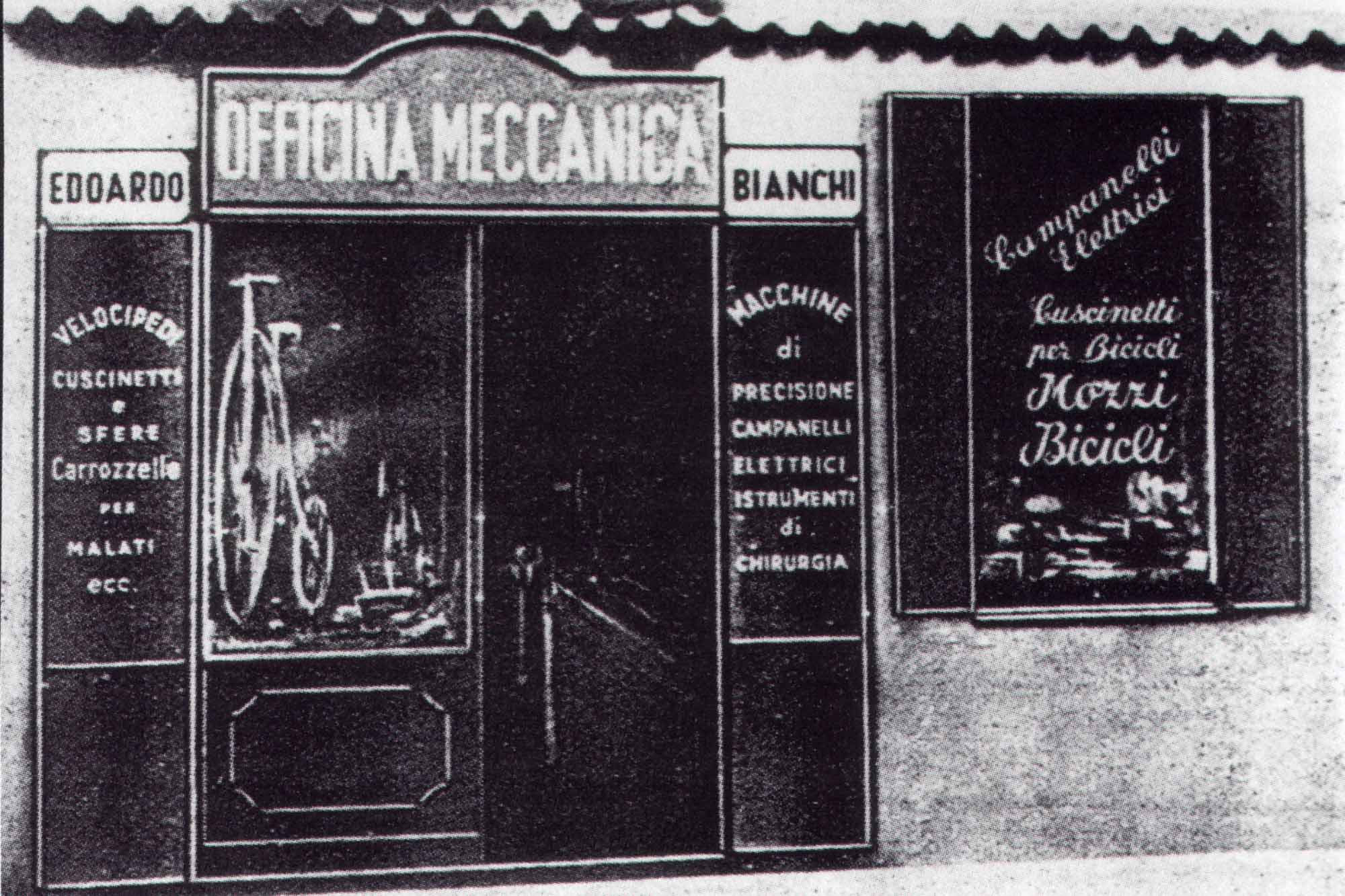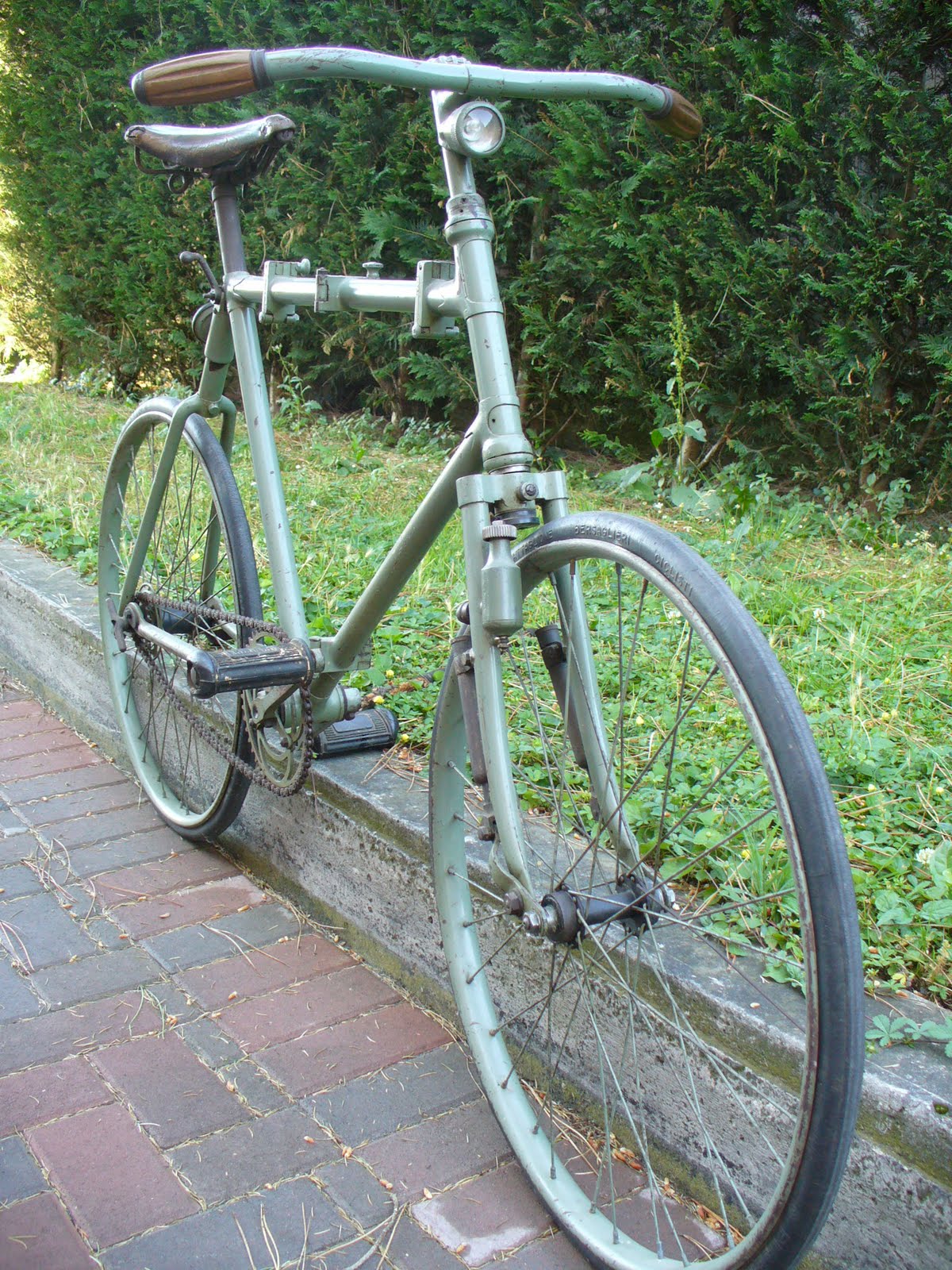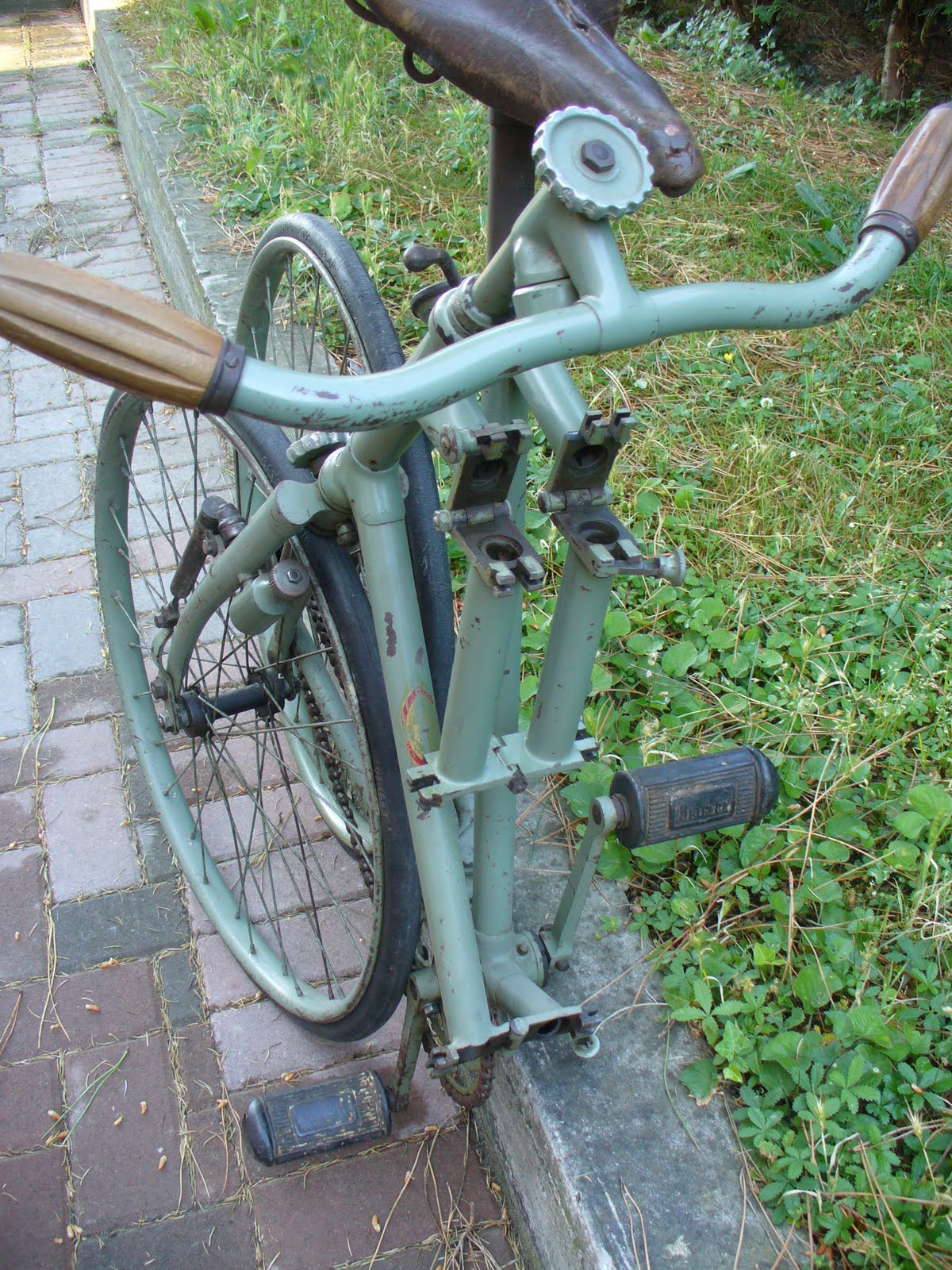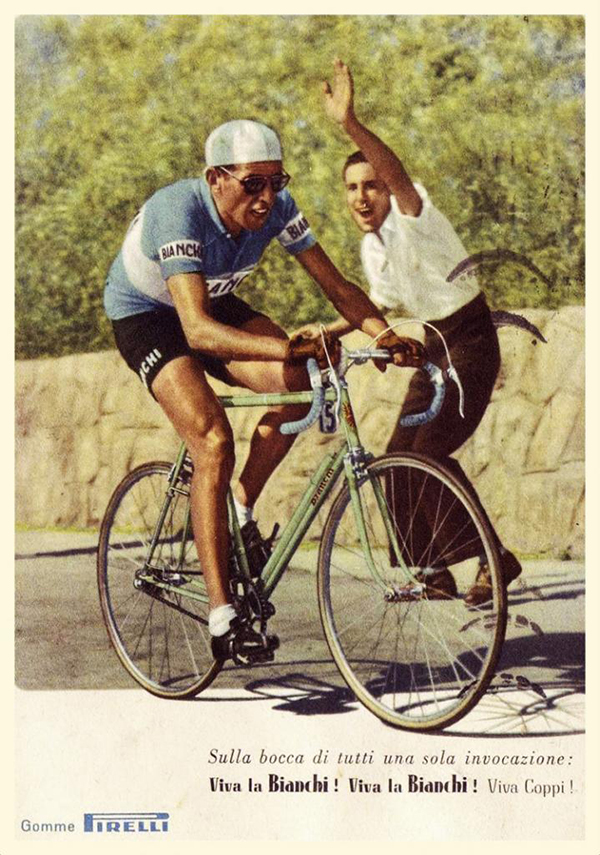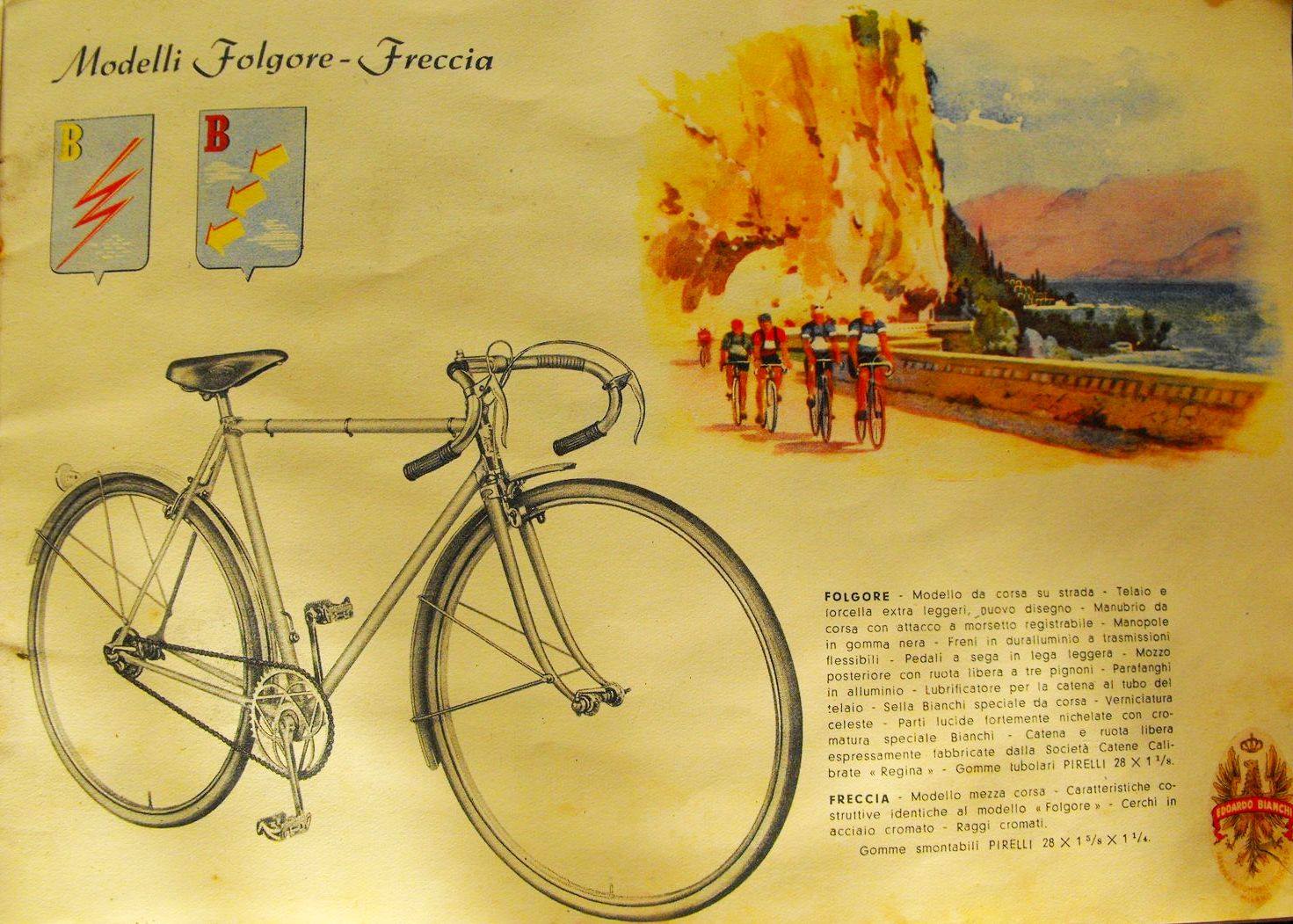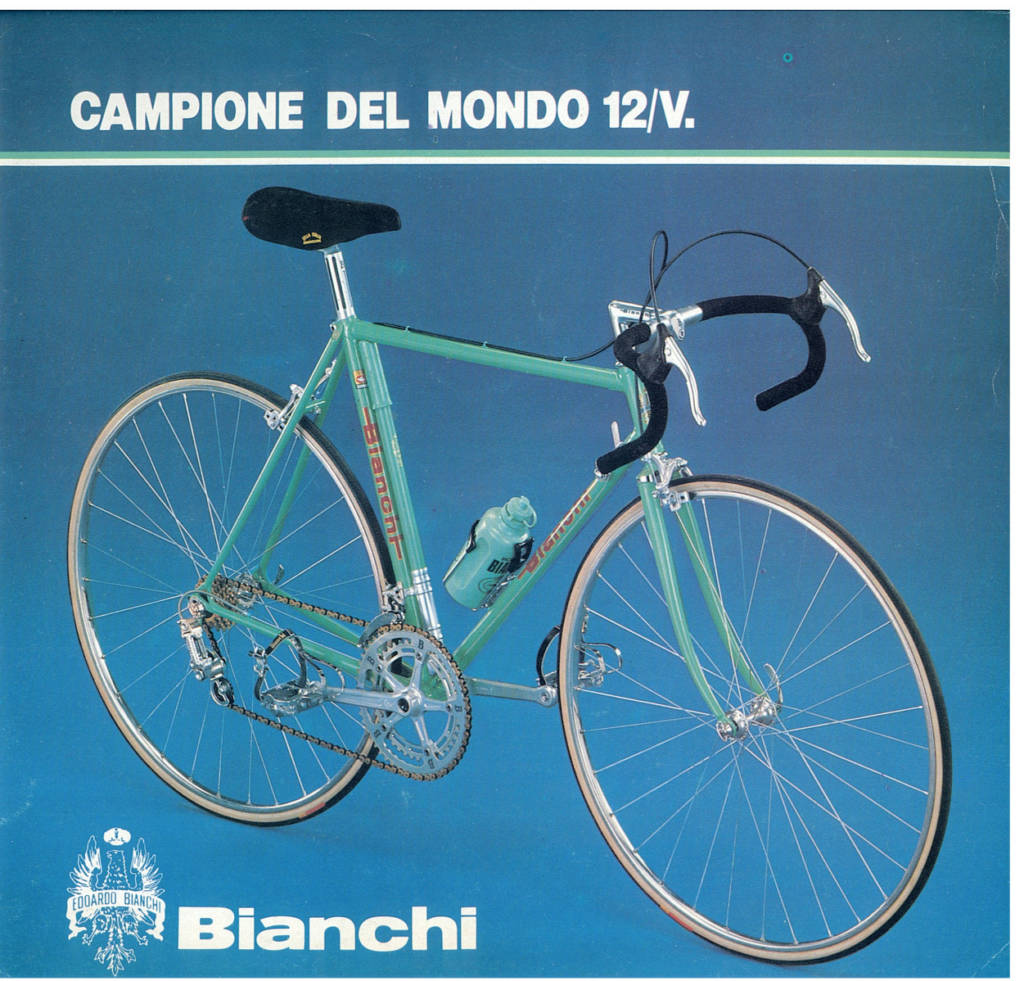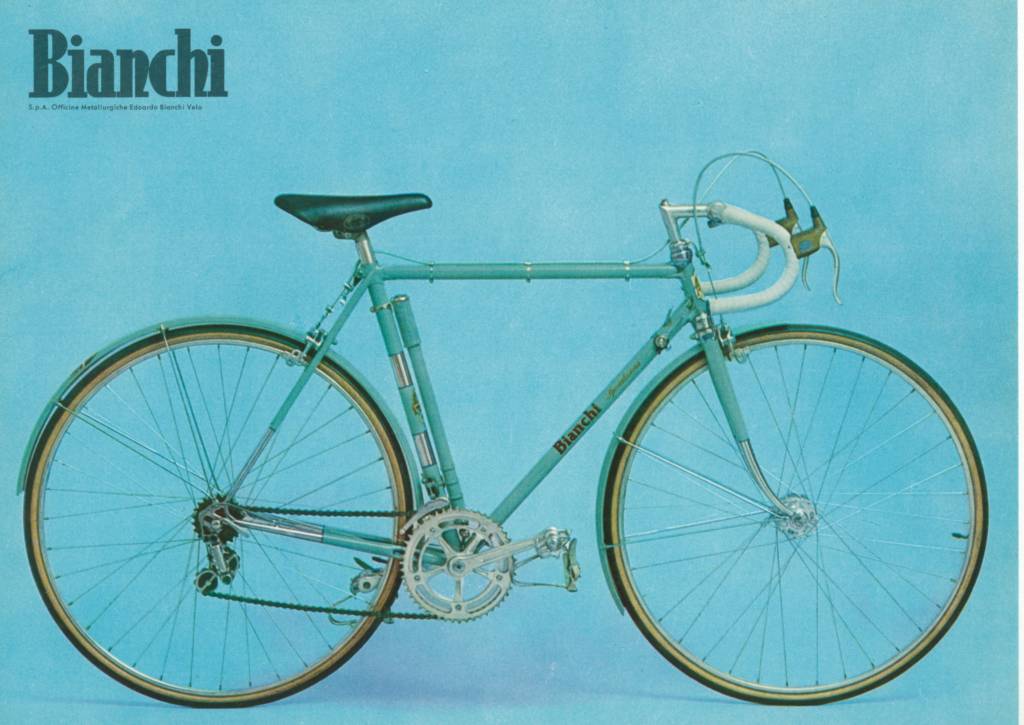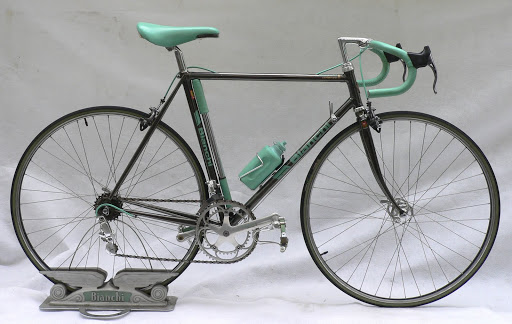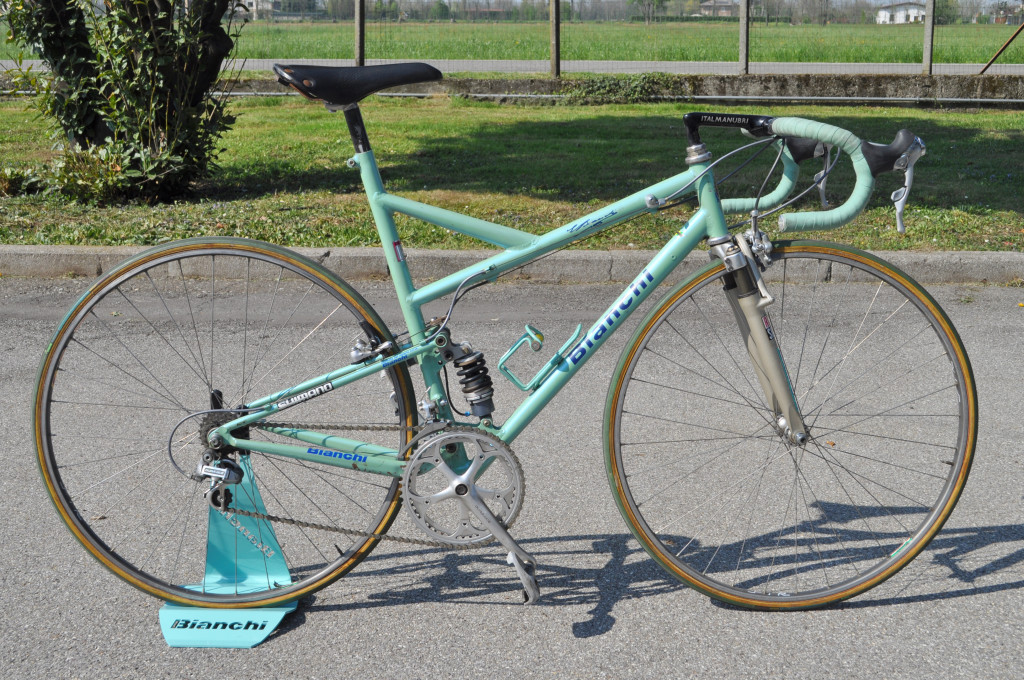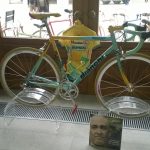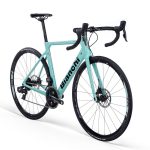The oldest bicycle brand in the world, Bianchi was founded by Edoardo Bianchi in 1885. The company still bears its name and is best known for its road bikes, although they also built cars and motorcycles in the early years.
When you think of a Bianchi bicycle, you automatically think of the blue-green color, called Bianchi celeste, which is typical for the bicycles. There are several stories about the origin of this color, more about this you will find in the article Where does the typical color of the Bianchi bikes come from?
Many riders were successful on Bianchi racing bikes. The most important are Fausto Coppi, Felice Gimondi, Moreno Argentin, Gianni Bugno, Marco Pantani and Jan Ullrich. These riders provided the following victories: 12 times the Giro d'Italia, 3 times the Tour de France and 5 times the World Championship on the road.
Bianchi sponsored many cycling teams and supplied them with bicycles: Bianchi Piaggio in 1973, Sammontana Bianchi in 1985, Gewiss Bianchi in 1987, Mercatone Uno Bianchi in 1989 and as a temporary sponsor of Jan Ulrich's team for the Tour de France in 2003
Currently, the Dutch cycling team Jumbo Visma rides Bianchi bicycles. However, they are not a sponsor, the last time Bianchi sponsored a cycling team was in 1998.
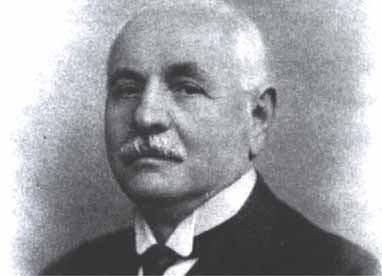 Edoardo Bianchi
Edoardo Bianchi
Edoardo Bianchi was born in Milan on July 17, 1865. At the age of 7 he attends the Martinitt school (an institution in Lombardy for orphans) where he follows a basic mechanics course. After all, Edoardo became an orphan at the age of 4.
To thank the institution, Edoardo will donate a percentage of his winnings to the school every year until his death.
The Brand Bianchi is born
In 1885, at the age of 20, Edoardo Bianchi founded his company to which he gives his family name and, in addition to producing velocipede, surgical instruments and electric bells, he also started producing safety bicycles. Bicycles that are easier to ride than regular bicycles due to the smaller diameter of the front wheel and the lower positioning of chain and pedals.
Three years later, he makes his first pneumatic bicycle to John Dunlop's idea, and in 1895 he builds a women's bicycle for Queen Margherita of Savoy after previously being invited to the royal villa of Monza to teach the royal family how to cycle.
Bianchi motorcycles and luxury cars
Edoardo Bianchi expanded his business in 1899 and started producing motorcycles and luxury cars. The first cars are very successful, especially due to the gifts included in the price (a tool box, a few days driving training and - above all - a home repair service).
From the beginning, Edoardo Bianchi is interested in cycling as a competition and starts the competitions department (Reparto Corse).
The first victory on a Bianchi bicycle dates from the same year. Gian Ferdinando Tomaselli finishes first at the Grand Prix de La Ville in Paris.
Innovations around the turn of the century
The twentieth century begins for Bianchi with two important innovations by Edoardo himself: the cardan transmission (launched in 1901) and the front wheel brakes (1913).
Bianchi also exhibits his bicycles and inventions at the International fairs of Paris, Rome, Bologna and Milan where he is very successful and is gradually gaining international fame.
The Milanese company is growing and in 1914 it produces 45,000 bicycles, 1,500 motorbikes and 1,000 cars. Unfortunately, after the outbreak of the First World War, Bianchi has to focus on military means such as trucks for the transport of soldiers and war bicycles.
The latter are equipped with large pneumatic tires, a folding frame and suspensions on both wheels.
The difficult post-war period
In the first post-war period, the Italian car market was in a deep crisis and this led Edoardo Bianchi to focus on engines and cheaper cars.
A good choice when it comes to two-wheelers, thanks in part to the victories of Tazio Nuvolari in 1925 who became European champion in the 350 class on a Bianchi motorcycle.
A much less successful choice in the automotive sector that closes its doors with the production of the S9 in 1934.
Fausto Coppi and Bianchi
In the second half of the 1930s, Edoardo Bianchi decided to concentrate mainly on bicycles: in 1935 his company produced more than 70,000 copies and five years later a young cyclist named Fausto Coppi de Giro d'Italia won a Bianchi.
Before that, this talented rider was in the Italian team of Legnano where he was the lieutenant of his later rival Gino Bartali.
Bianchi bicycles have now become a concept.
During the Second World War, Bianchi managed to recover from the crisis, mainly thanks to military assignments, but the situation deteriorated at the end of the conflict, also due to the death of Edoardo (Edoardo Bianche died on July 3, 1946 in Varese after a road accident).
In the mid-1950s another difficult period for the company started and Bianchi survives only thanks to the sale of the bicycles, the other products such as the motorcycles are doing very bad.
New owners for Bianchi
However, in 1964 Bianchi is on the verge of bankruptcy and only with the help of the Trapletti family the company survives. A few years later, in 1972, they took over the company completely.
Another important episode in Bianchi's history is the takeover in 1980 by Piaggio, known from the Vespa.
Since 1997, Bianchi has been part of the Swedish group Cycleurope which is a subdivision of Grimaldi Industri AB. Peugeot, Puch, Gitane and Chiorda are also part of this holding company.
Mythical Bianchi models
Many well-known models have been launched over the years. Fausto Coppi has an important merit in this. The main ones are:
Bianchi Folgore From 1940
Bianchi Folgorissima from 1949 with which Fausto Coppi won Paris Roubaix in 1950. Shortly thereafter, the model Bianchi Folgorissima changed to Bianchi Paris Roubaix.
Bianchi Tour de France from 1952 after the victory of Fausto Coppi
Bianchi Campione del Mondo, model after the world title of Fausto Coppi in Lugano in 1953
Bianchi Specialissima from 1958
Bianchi del centenario: 1985 model specially developed for the celebration of the 100th anniversary of the Bianchi brand
Bianchi Parigi Roubaix: much discussed model with suspension from 1994 with which Johan Museeuw drove Paris Roubaix

